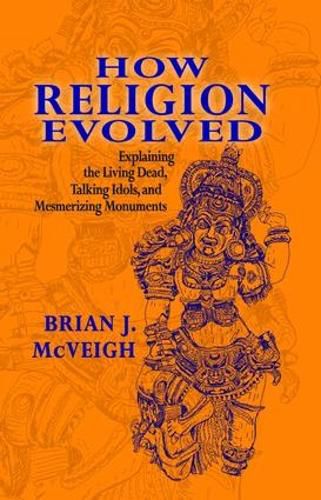Readings Newsletter
Become a Readings Member to make your shopping experience even easier.
Sign in or sign up for free!
You’re not far away from qualifying for FREE standard shipping within Australia
You’ve qualified for FREE standard shipping within Australia
The cart is loading…






Why did many religious leaders-Moses, Old Testament prophets, Zoroaster-claim they heard divine voices? Why do ancient civilizations exhibit key similarities, e.g., the living dead (treating the dead as if they were still alive); speaking idols (care and feeding of effigies); monumental mortuary architecture and houses of gods (pyramids, ziggurats, temples)? How do we explain strange behaviour such as spirit possession, speaking in tongues, channelling, hypnosis, and schizophrenic hallucinations? Are these lingering vestiges of an older mentality?
Brian J. McVeigh answers these riddles by updating bicameralism. First proposed by the psychologist Julian Jaynes, this theory postulates that an earlier mentality existed: a human (the brain’s left hemisphere) heard voices of gods or ancestors (the brain’s right hemisphere). Therefore, ancient religious texts reporting divine voices were recounting of audio-visual hallucinations-a method of social control when early populations expanded. As growing political economic complexity destabilized god-governed states in the late second millennium BCE, divine voices became inadequate.
Eventually, humans had to culturally acquire new cognitive skills (modern religions) to accommodate increasing social pressures: selves replaced the gods and history witnessed an inward turn. This psychological interiorization of spiritual experience laid the foundations for the world’s great religions and philosophies that arose in India, China, Greece, and the Middle East in the middle of the first millennium BCE.
$9.00 standard shipping within Australia
FREE standard shipping within Australia for orders over $100.00
Express & International shipping calculated at checkout
Why did many religious leaders-Moses, Old Testament prophets, Zoroaster-claim they heard divine voices? Why do ancient civilizations exhibit key similarities, e.g., the living dead (treating the dead as if they were still alive); speaking idols (care and feeding of effigies); monumental mortuary architecture and houses of gods (pyramids, ziggurats, temples)? How do we explain strange behaviour such as spirit possession, speaking in tongues, channelling, hypnosis, and schizophrenic hallucinations? Are these lingering vestiges of an older mentality?
Brian J. McVeigh answers these riddles by updating bicameralism. First proposed by the psychologist Julian Jaynes, this theory postulates that an earlier mentality existed: a human (the brain’s left hemisphere) heard voices of gods or ancestors (the brain’s right hemisphere). Therefore, ancient religious texts reporting divine voices were recounting of audio-visual hallucinations-a method of social control when early populations expanded. As growing political economic complexity destabilized god-governed states in the late second millennium BCE, divine voices became inadequate.
Eventually, humans had to culturally acquire new cognitive skills (modern religions) to accommodate increasing social pressures: selves replaced the gods and history witnessed an inward turn. This psychological interiorization of spiritual experience laid the foundations for the world’s great religions and philosophies that arose in India, China, Greece, and the Middle East in the middle of the first millennium BCE.